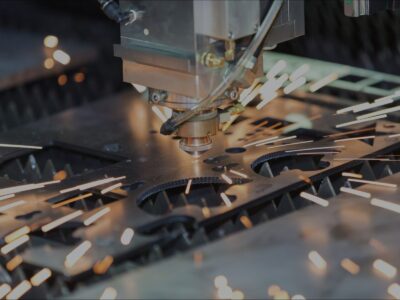Unlocking Efficiency and Precision: A Comprehensive Guide to Pattern Machining

Pattern machining, a versatile technique in computer-aided manufacturing (CAM), offers a powerful means of optimizing machining operations for repetitive geometric patterns, arrays, or features on workpieces. By leveraging pattern machining, manufacturers can streamline programming, enhance productivity, and ensure consistency across complex geometries. In this comprehensive guide, we’ll explore the intricacies of pattern machining, covering its significance, methods, applications, challenges, and best practices.
Understanding Pattern Machining
Pattern machining refers to the process of generating toolpaths to machine repetitive patterns or features on a workpiece efficiently. These patterns can include arrays of holes, slots, pockets, or other geometric shapes that repeat regularly across the workpiece surface. Pattern machining aims to minimize programming time and toolpath generation complexity while ensuring accuracy and consistency in machining operations.
Importance and Benefits
Pattern machining offers several key benefits that make it essential for modern manufacturing:
- Time Efficiency: By automating the generation of toolpaths for repetitive patterns, pattern machining reduces programming time and accelerates the setup process for machining operations.
- Consistency: Pattern machining ensures uniformity and consistency in machining operations across the workpiece, minimizing variations in dimensions, tolerances, and surface finish.
- Accuracy: With precise control over toolpath generation, pattern machining ensures accurate placement and machining of features within the pattern, meeting design specifications and tolerances.
- Productivity: By optimizing toolpath generation and minimizing unnecessary tool travel, pattern machining increases machining efficiency and throughput, leading to higher productivity.
- Flexibility: Pattern machining is adaptable to various geometric patterns, sizes, and configurations, making it suitable for a wide range of applications and industries.
Methods for Using Pattern Machining
Implementing pattern machining involves several methods and considerations:
- CAM Software Features: Most CAM software packages offer specialized features and tools for pattern machining, allowing users to define patterns, customize parameters, and generate toolpaths automatically.
- Pattern Definition: Define the geometric pattern or features to be machined, specifying parameters such as spacing, orientation, size, and arrangement according to design requirements.
- Toolpath Generation: Utilize CAM software to generate toolpaths based on the defined pattern, taking into account tool selection, cutting parameters, machining strategy, and material considerations.
- Simulation and Verification: Before machining, simulate and verify toolpaths to ensure that the pattern machining strategy is feasible, collision-free, and compatible with machine tool capabilities and workpiece geometry.
- Post-Processing Optimization: Fine-tune toolpaths and cutting parameters as needed to optimize machining performance, surface finish quality, and productivity based on simulation results and machining experience.
Challenges and Considerations
Despite its benefits, pattern machining presents challenges that require careful consideration:
- Pattern Complexity: Machining complex patterns with irregular shapes, varying sizes, or intricate details may pose challenges in toolpath generation, collision avoidance, and material removal, requiring advanced CAM software capabilities.
- Tool Selection and Machinability: Selecting appropriate cutting tools and machining strategies for pattern machining depends on factors such as material properties, feature dimensions, tool access, and machinability considerations.
- Machine Tool Limitations: Machine tool capabilities, such as axis movement, spindle speed, and tool change capabilities, may limit the feasibility and efficiency of certain pattern machining operations, necessitating adjustments to machining strategies.
- Programming Expertise: Effectively utilizing pattern machining requires proficiency in CAM programming, geometric modeling, toolpath optimization, and machining simulation, as well as an understanding of machining fundamentals and best practices.
- Material Considerations: Machining different materials may require adjustments to cutting parameters, toolpath strategies, and tool selection to achieve optimal results while minimizing tool wear, surface roughness, and machining forces.
Best Practices for Pattern Machining
To maximize the effectiveness and reliability of pattern machining, manufacturers should adhere to best practices:
- Standardize Pattern Definitions: Establish standardized procedures and parameters for defining patterns, including spacing, orientation, size, and arrangement, to ensure consistency and repeatability across machining operations.
- Optimize Toolpath Strategies: Fine-tune toolpath strategies, cutting parameters, and machining sequences to minimize air cutting, optimize chip evacuation, and maximize material removal rates while maintaining surface finish quality and tool life.
- Utilize Simulation and Verification: Use simulation software and virtual machining tools to simulate and verify pattern machining operations, identifying potential issues, optimizing toolpaths, and validating machining strategies before actual machining.
- Iterative Optimization: Continuously monitor and evaluate machining performance, surface finish quality, and productivity metrics to identify opportunities for optimization and refinement of pattern machining processes.
- Invest in Training and Education: Provide training and education to CAM programmers, machinists, and operators to enhance their proficiency in pattern machining techniques, software utilization, and machining optimization strategies.
Applications and Case Studies
Pattern machining finds applications across various industries and machining processes:
- Sheet Metal Fabrication: Pattern machining is used to create arrays of holes, slots, or cutouts in sheet metal components for applications such as ventilation panels, mounting brackets, and decorative trim.
- PCB Manufacturing: In printed circuit board (PCB) manufacturing, pattern machining is employed to mill or drill arrays of holes for mounting electronic components, connectors, and soldering pads.
- Mold and Die Making: Pattern machining is utilized in mold and die making to create cavities, cores, and cooling channels with intricate patterns and features for injection molding, die casting, and stamping operations.
- Woodworking and Furniture Production: Pattern machining is applied in woodworking and furniture production to create decorative patterns, grooves, or joints in wooden components such as panels, moldings, and frames.
Conclusion
In conclusion, pattern machining is a versatile and powerful technique for optimizing machining operations, streamlining programming, and ensuring consistency and accuracy across complex geometric patterns. By leveraging CAM software features, optimizing toolpath strategies, and utilizing simulation and verification tools, manufacturers can harness the full potential of pattern machining to enhance productivity, quality, and competitiveness in today’s manufacturing landscape. Master the art of pattern machining, and unlock new possibilities for efficiency and precision in your machining operations.




